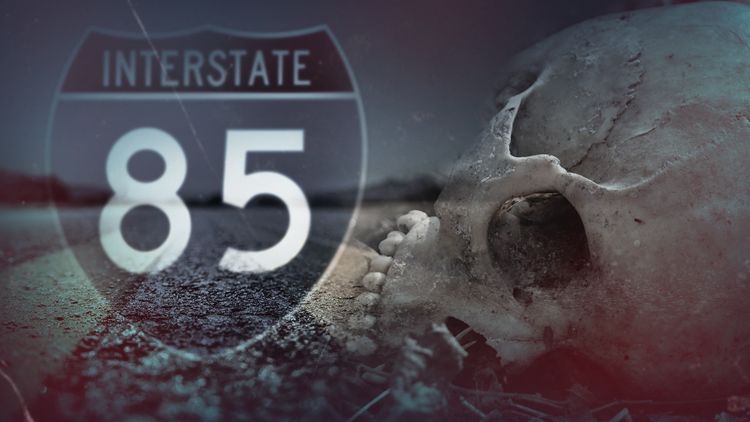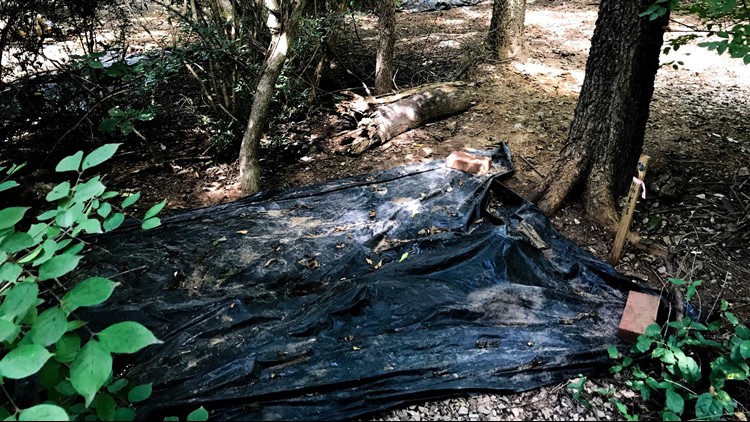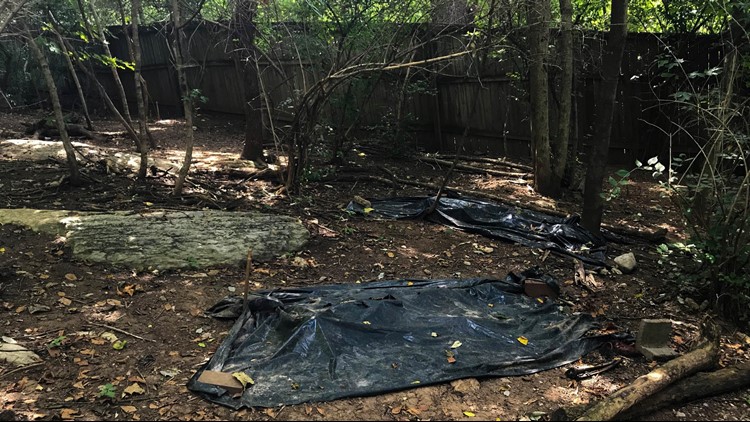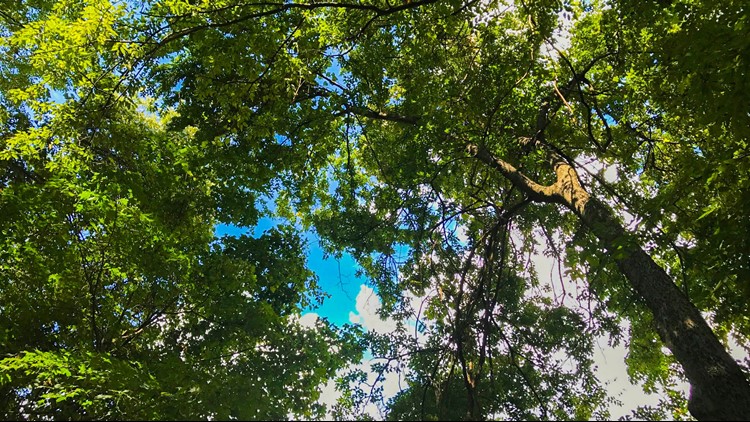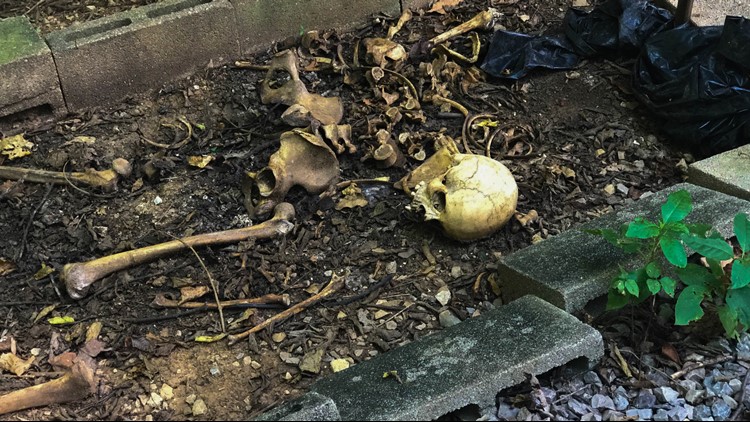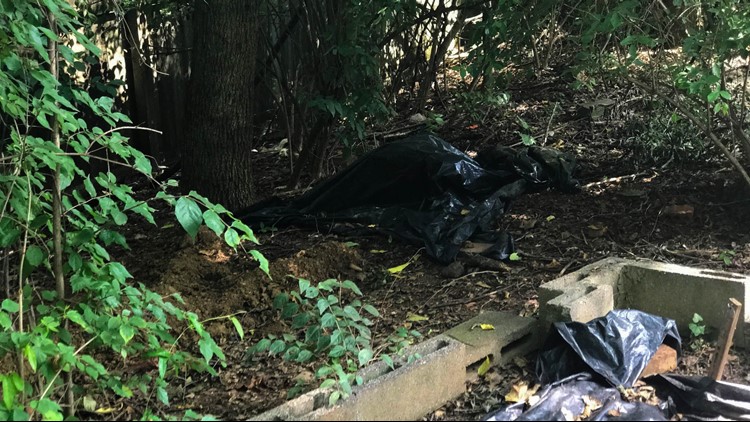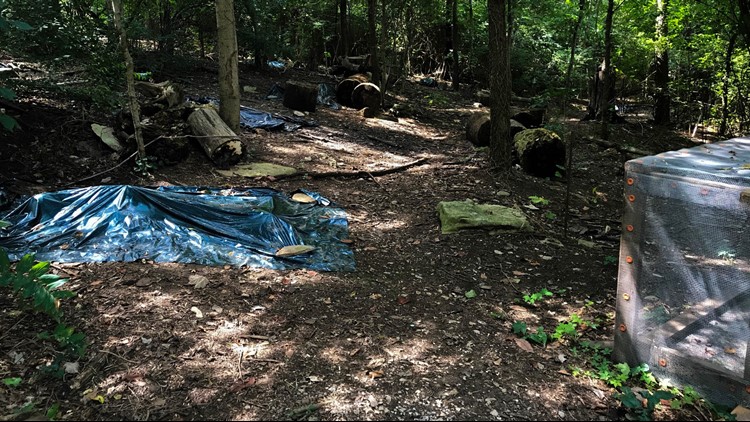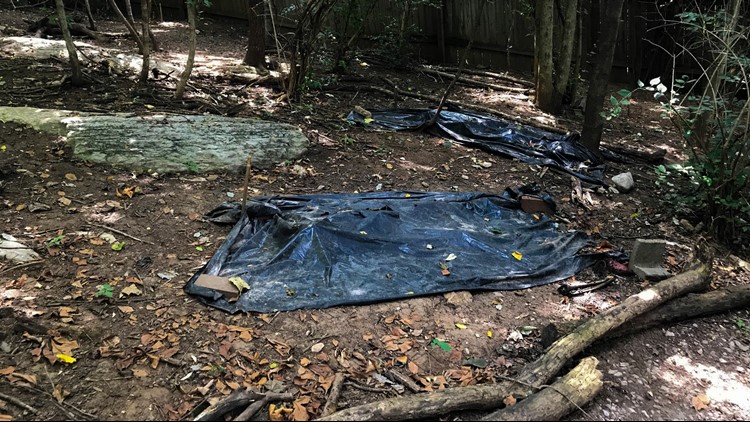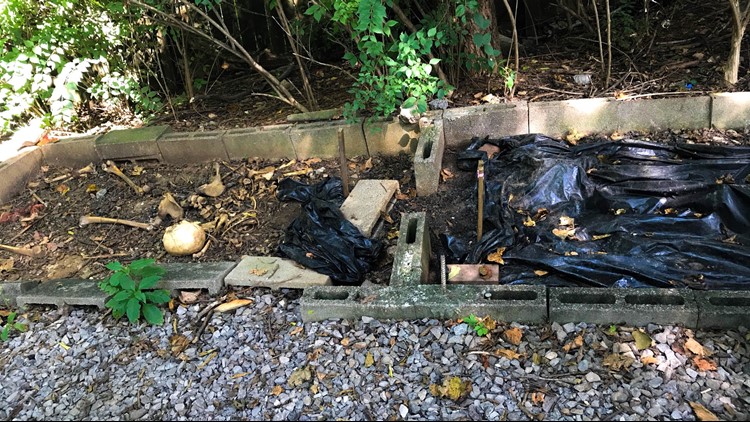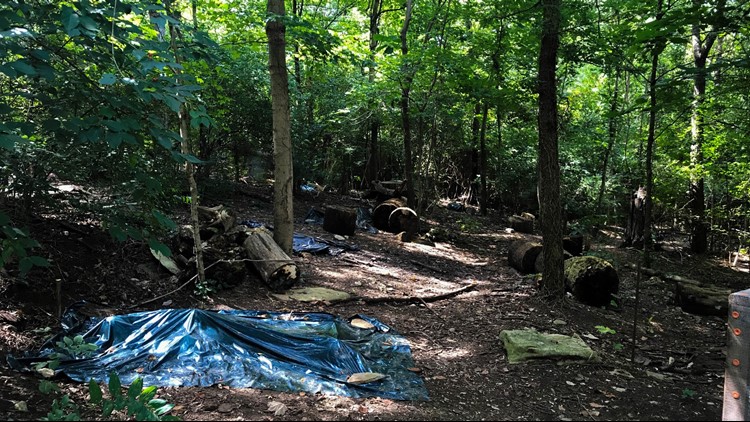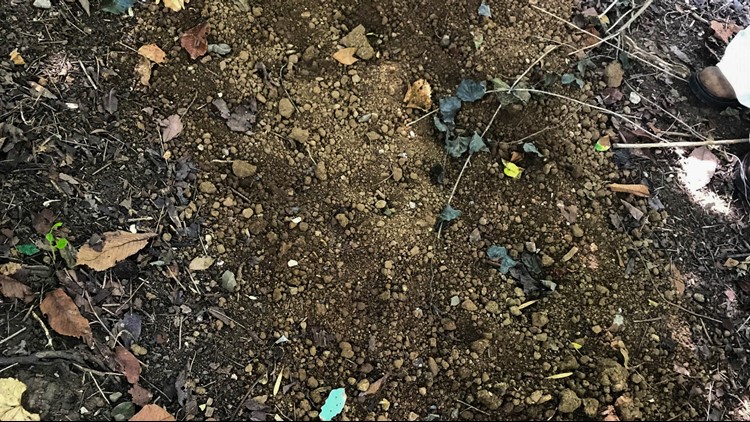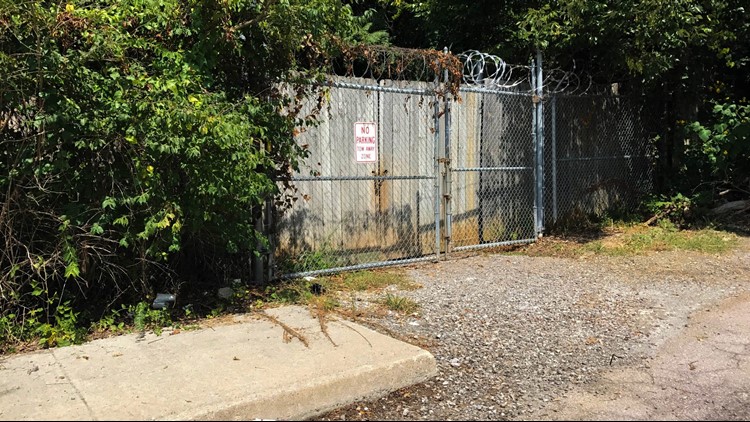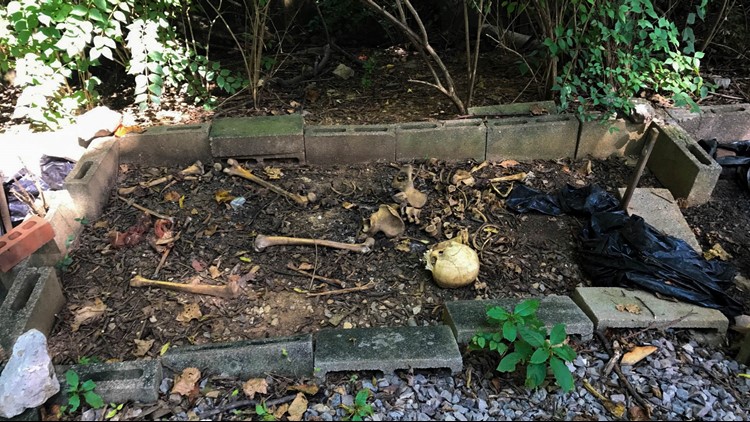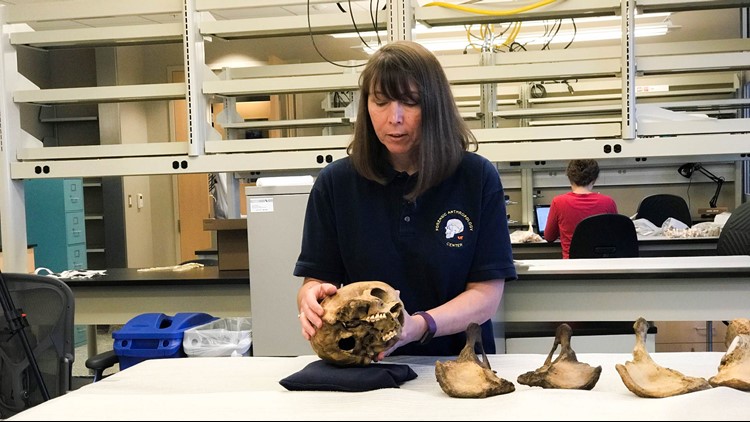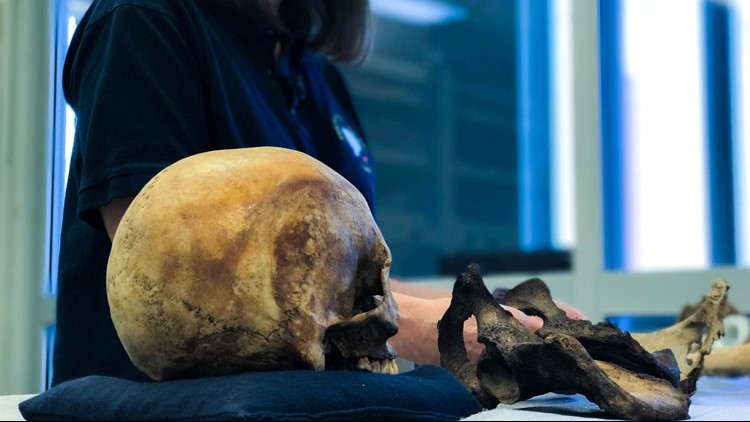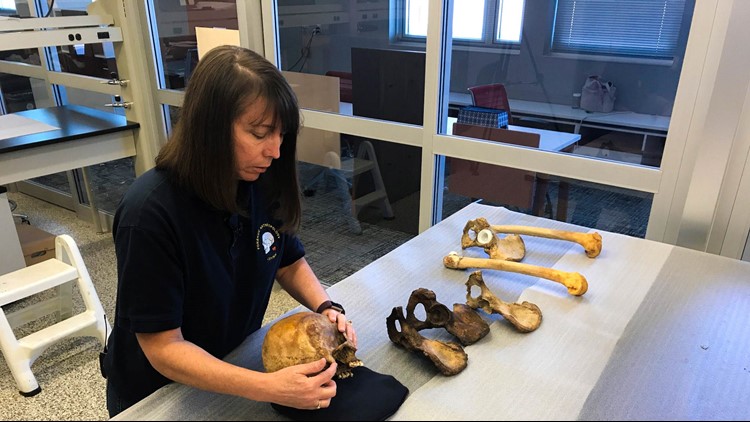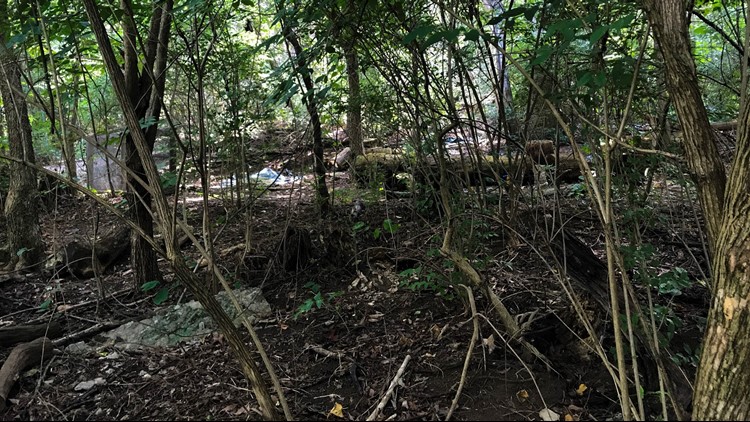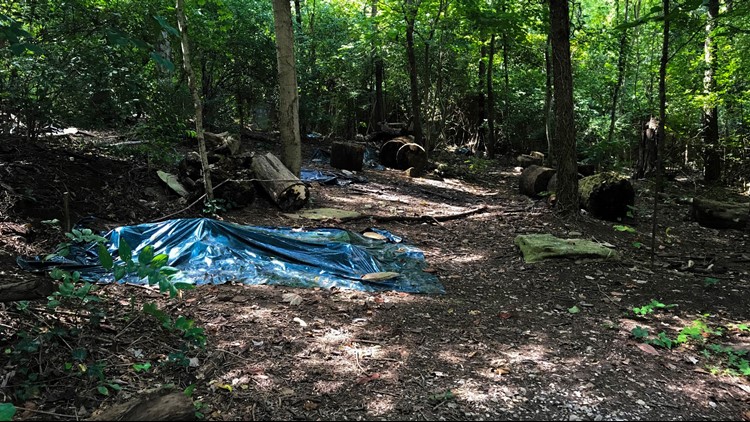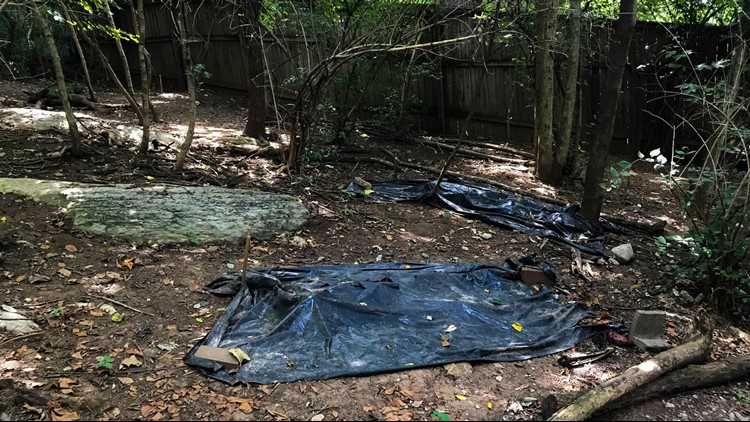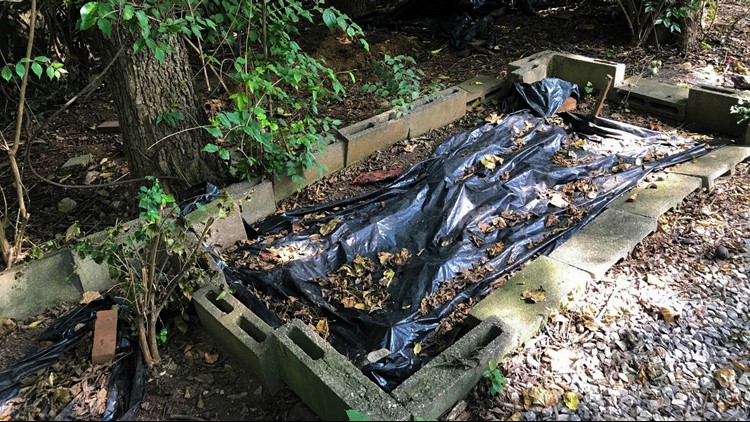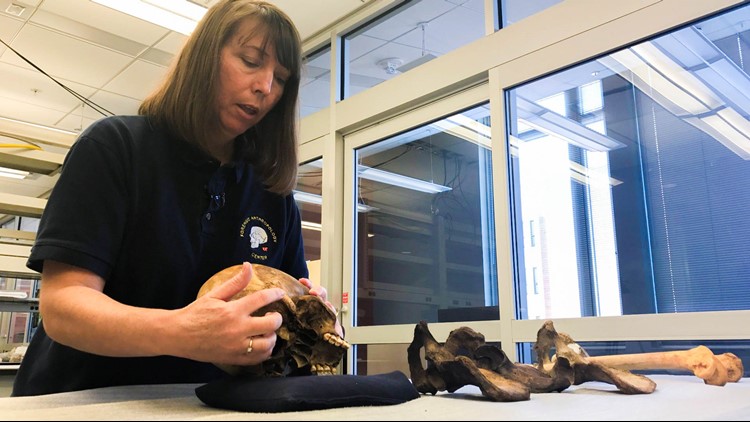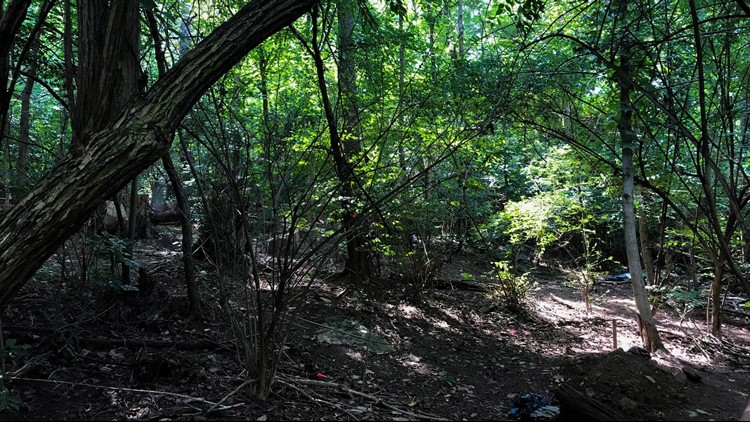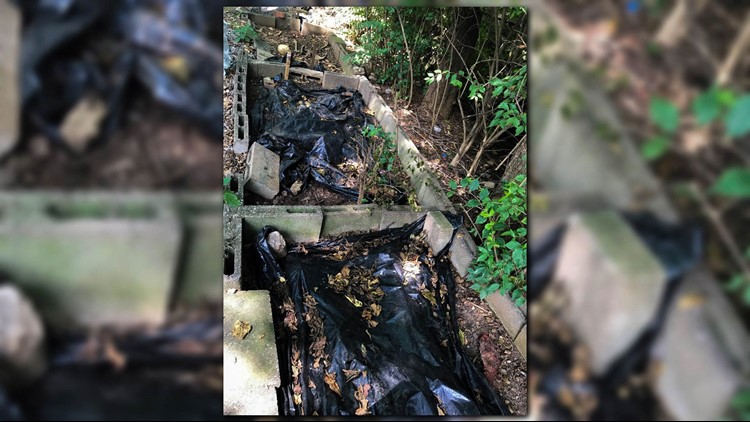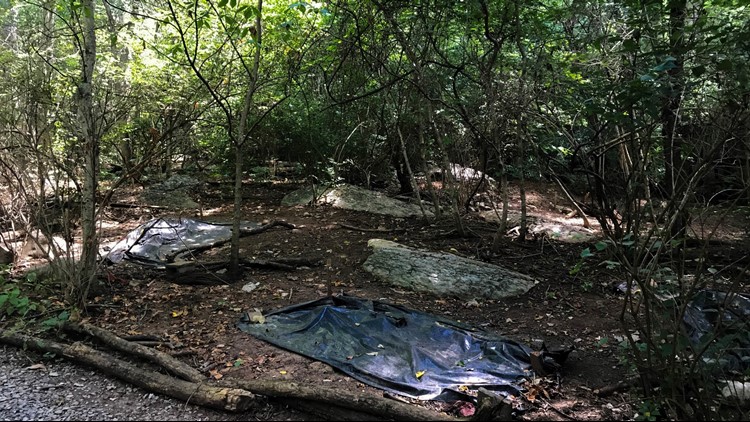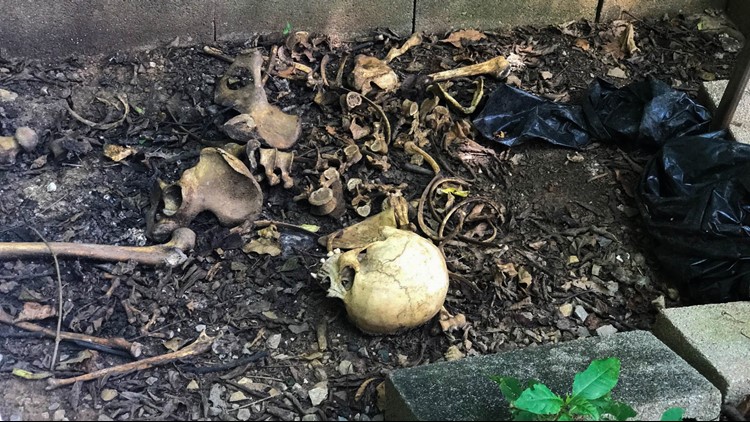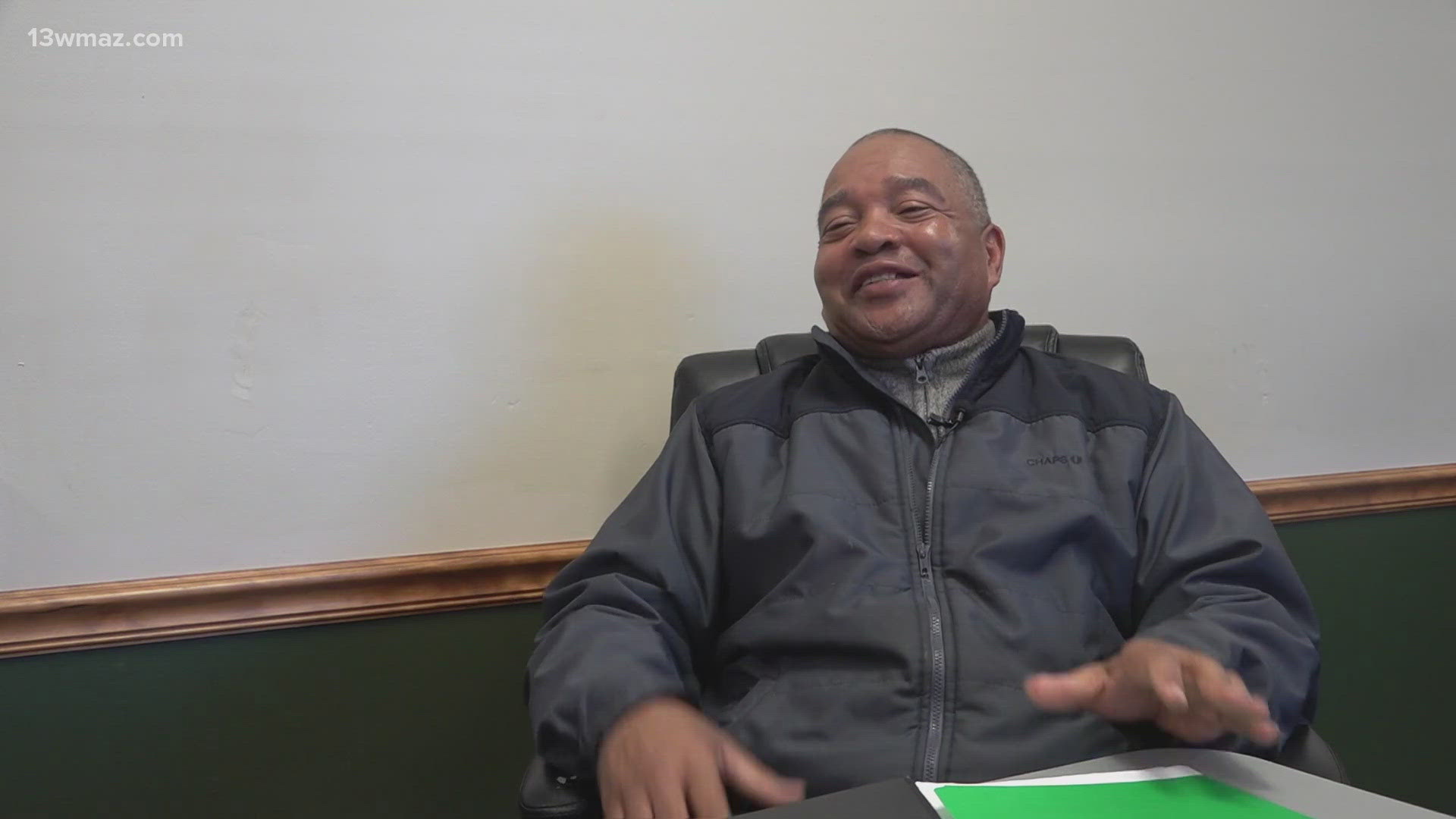*DISCLAIMER: This story contains graphic images, video and details.
Found sans identity, story and justice
The youngest victim was just days old; the oldest, 50. They were dumped, abandoned, forgotten. Until now.
The lucky ones have a name.
The rest are Janes and Johns.
Each of them is someone’s loved one.
They’ve been cast off in an effort to mask their tragic ending, some dating back to 1975. But for investigators, it’s just the beginning of their story.
To date, 30 men, women and children have found their final resting place along a road you drive every day. And, some of them are a part of the nearly 2,000 people missing in Georgia, according to the Georgia Bureau of Investigation.
And they keep piling up.
The trail of covert deadly deception stretches nearly 200 miles along the Interstate 85 corridor from Georgia to the northern tip of South Carolina. Some found are bodies, some naked—others wearing clothes. Some are mere bones with few clues, found only because of back-country hikers, real estate developers or men panning for gold.
“There’s a lot of rural area in there; there’s a lot of vegetation; there’s a lot of hillcrests and other areas in which you can make a car disappear just by going around a bend,” GBI special agent, Jeremy Howell, said.
Investigators, like Howell, struggle to give these victims a real identity, uncover the truth about what happened to them and tell their stories.
These are some of those stories.

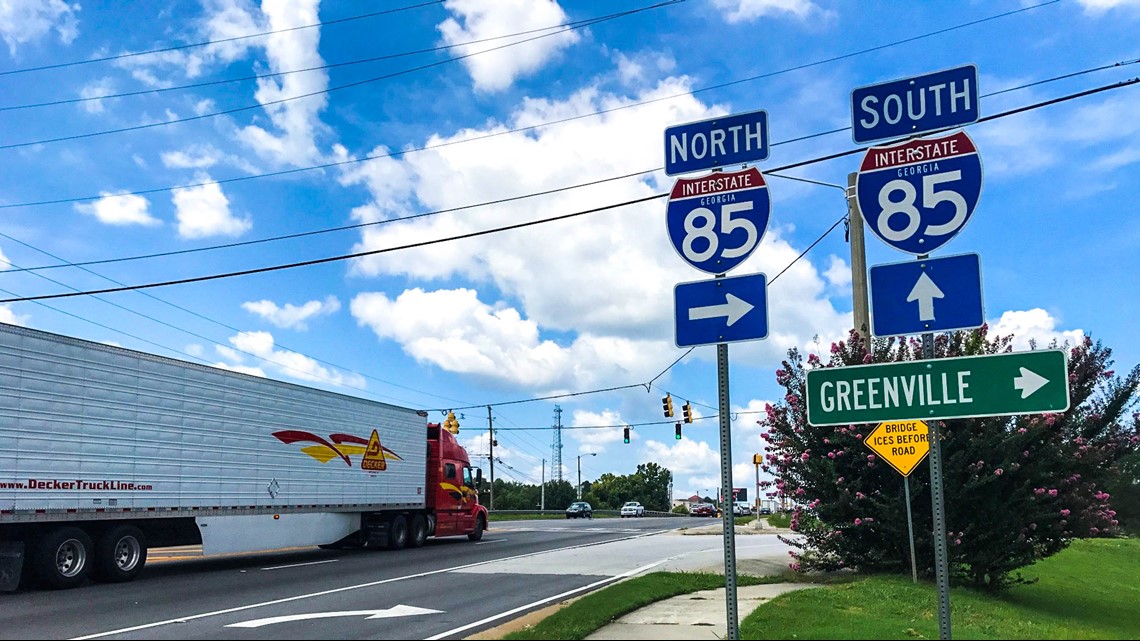
Victim's own words lead her investigation
Leslie Adams, a mom, beautician, a one-time body builder and Navy veteran, was one of those thousands in Georgia who went missing.
Investigators have sorted through the details of what might have been her last hours alive 12 years ago— looking for clues in police reports, a restraining order and her missing persons report—and at the people who knew her.
The 40-year-old told police that she was afraid for her life. She told her sister if anything happened to her, "he did it."
And then, she was gone.


A Franklin County woman walks along her country road, checking for beaver dams. Something in the muddy, swampy waters below her, catches her eye.
Peering through the overgrown, springtime branches full of leaves, she sees a shoe. She thinks it might be one of hers that her dog took and ran with. So, she investigates and moves in for a closer look.
The shoe isn’t empty.
It contains what’s left of a foot bone.
And, there’s more.
Clothing. One breast implant. And bones. Her arms and legs.
It’s Leslie Adams.
THE EVIDENCE | What happened to Leslie Adams?
Burglary report: Oct. 11, 2005
Restraining order: Oct. 19, 2005
Missing persons report: Oct. 24, 2005
Cierra Burk, 28, remembers swapping clothes with her mom and hearing her cheer the loudest from the stands when she was on the basketball court.
She can still hear her voice, and she thinks back to the time when her mom disappeared.
Burk, then-16, said Adams kept her fear hidden from her and her brother. But, she did share her concerns with her older sister, Roberta.
“She told her, if anything happens to me, he did it,” she said, referring to her ex-boyfriend, Billy Cook.
Days leading up to her disappearance, police responded to her apartment numerous times for domestic calls between her and Cook. And just one day before she disappeared, she had filed a restraining order against him.
When Leslie went missing, Burk knew something wasn’t right. The then-high school junior, who at the time lived with her grandmother, said she talked to her mom on the phone on certain days.
But the phone remained silent.
“At first, I just used to think she was scared, so she didn’t come around,” she said, letting out a deep sigh, and then buries her face into her hands and begins sobbing. “But then birthdays past and holidays past and I never heard from her.”
She had always clung to hope, until they told her that they found a body, and confirmed to her, that it was her mom.
“She died trying to hide,” Burk said of her mom who loved life and living it. “She didn’t go out without a fight, cuz she’s a fighter and I know she fought back.”
While the GBI identified her remains eight years ago, that’s only one piece of her puzzle. Her killer’s identity remains a mystery.
Cook was arrested in 2005 for violating the protection order and was charged with aggravated stalking. He denied any involvement with her disappearance, during an interview in 2005 with 11Alive.
No one has ever been charged in Leslie’s death.
Although more than a decade old, the cold case isn’t dead.
In fact, it’s been re-opened recently by Gwinnett County Police Sgt. John Richter. The veteran homicide detective is giving the case a fresh set of eyes and a large dose of sheer determination to solve it—re-interviewing witnesses and sifting through evidence that could lead him to her killer.
“Everybody’s a suspect,” he assured.


Secrets in plain sight
Elaine Nix has been dead as long as she was alive.
The 18-year-old blonde was living with her parents in Hall County.
She had a routine.
When her boyfriend paged her, she’d drive to Zack’s Food Rack, off Candler Road, and use the pay phone to call him. And that’s what she was doing the last time she was seen alive.
Her parents found her car the next day still parked at the convenience store in Gainesville, Ga., and reported her missing.
Her body was found a week later in the woods, just past the “Welcome to Gwinnett County” sign.

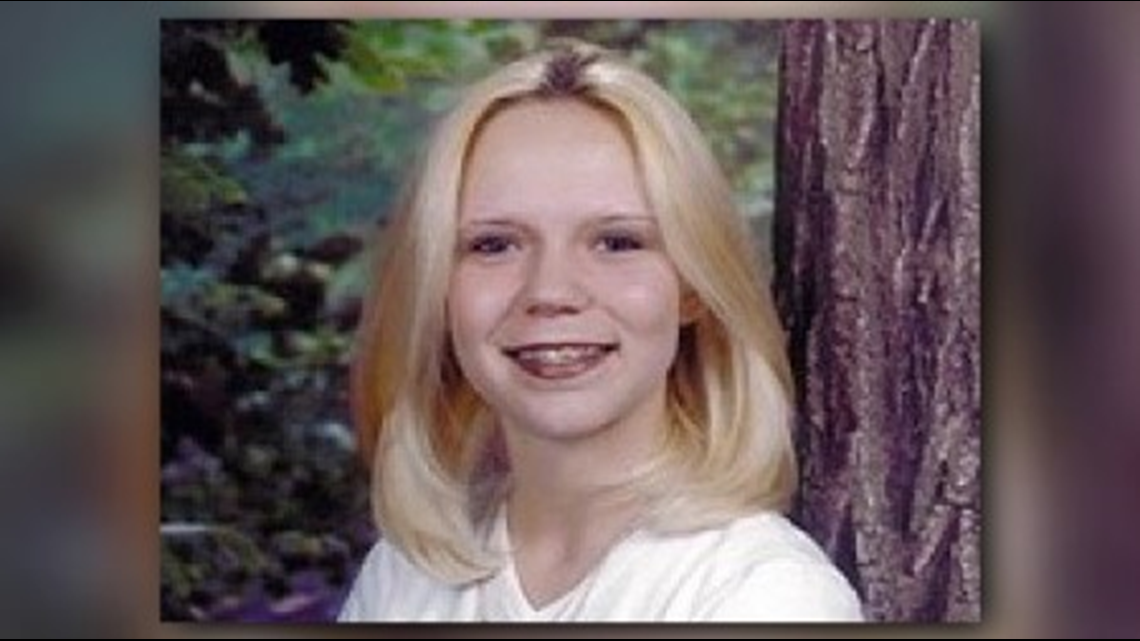
It was a hot autumn day when, after smelling something “dead” in the woods for days, an Industrial Cutting Die employee investigated the industrial park’s grounds. That’s when he discovered Nix’s nude body along the tree line on Sept. 29, 1999 in Buford, Ga.—six miles off I-85.
Her case remains unsolved.
Why I-85?
Just a 20-mile escape from the hustle and bustle of downtown and outside the bumper-to-bumper traffic is a more rural part of metro Atlanta—an interstate that folds into a country landscape as far as the eye can see, surrounded by endless blue skies, dense woods and rock-skipping creeks.
Perpetrators have easy access when they dart off the interstate, slither a few hundred feet down a two-lane highway, and cut down a country side road to dispose of what they’ve done—where they’re able to conceal just about anything under the refuge of dark shrubbery, massive pines and overgrown weeds and moss.
“[It doesn’t] surprise me to find this many remains within an hour’s drive of Atlanta. That’s going to be somebody’s comfort zone if they’re coming from the metro Atlanta area,” Howell, who works out of the GBI’s Athens field office, said.
While looking at the Dumping Grounds Google Map, he agreed the same would hold true for an hour’s drive in the other direction—south to Spartanburg, S.C.
Surging economy uncovers more than booming profits
As the rural route leading into South Carolina cultivates development, it could eliminate the seemingly easy and seamless spot to dump.
“As long as there’s economic development, construction development along that I-85 corridor some of these secluded areas where a body may have been clandestinely hidden, they will become revealed,” Howell assured.

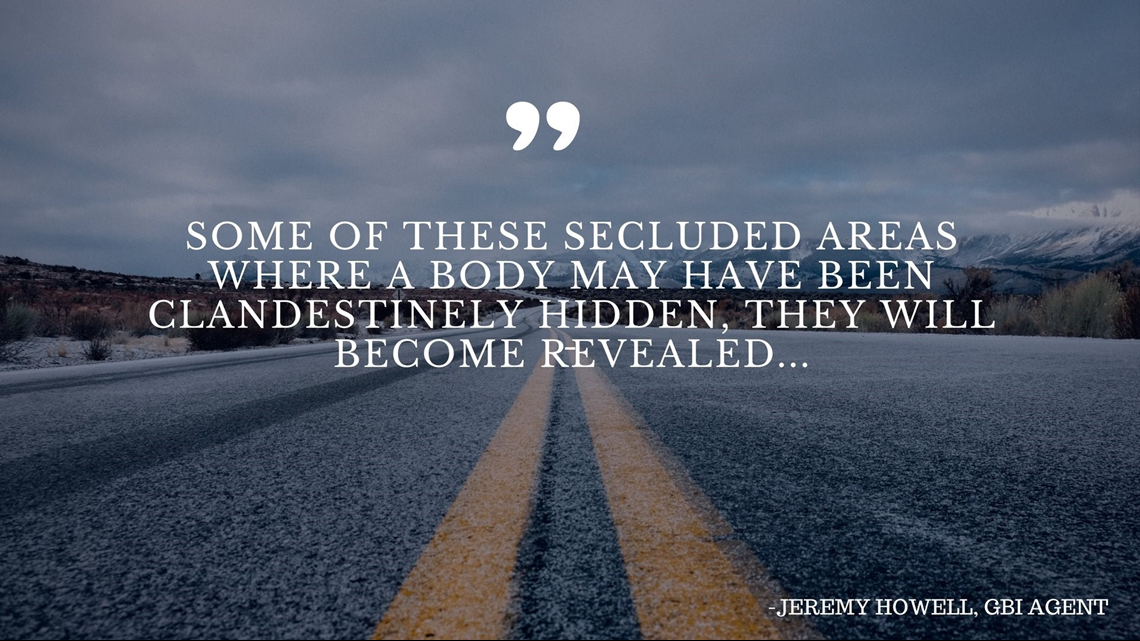
“Fields where somebody once thought, ‘If I put these remains here they won’t be found.’ They’re being found.”
The investigator recalled a suitcase encompassing remains were found between I-985 and I-85.
As the rural landscaping is cleared for construction and surveyed for real estate--and there's an increase in development and a budding population taking over these once-overgrown and overlooked areas just off I-85--more remains will continue to surface, Howell said.
And, he said, the dumpers are utilizing the areas that are familiar to them.
“You don’t want to get onto too much uncommon ground or uncommon footing; what if you get found? What explanation are you going to have for being out there? You may be on somebody’s property and there may be a house on the other side of those trees that you weren’t familiar.
So, it doesn’t surprise me that somebody took a right then a left and a left—went out into the woods and dumped a body there, rather than get really entangled in five, six or even seven miles off of I-85 and have to explain why you’re out there at 3 o’clock in the morning with a shovel.”
Understanding those who leave the bodies is just as important as learning as much as possible about the person whose remains are left behind. Comprehending the who, what, where, when and why in forensics evidence is key to uncovering, identifying and ultimately solving the mystery.
And, for Howell, that means going to a farm a couple hundred miles away.
“One of the things we do with the Georgia Bureau of Investigations, especially our crime scene specialists, go through the 10-week program at the National Forensic Academy.”
“The knowledge that we collect from that, now that we go out to a death scene we have that level of understanding,” Howell said.
The dead do speak
In Knoxville, Tenn., tucked neatly within the active city and The University of Tennessee’s sprawling campus, is 2 1/2 acres of bodies. They’re not part of a crime scene, rather a facility to help solve crimes—training investigators like Howell.
It’s been dubbed The Body Farm.
A “NO PARKING TOW AWAY ZONE” sign is placed on the locked chain link fence gate—it’s topped with barbed wire, tangled within the overgrown brush, in an effort to conceal what’s inside. Behind the sliding gate is a second wooden gate with a rusty chain and lock, that when unfastened, swings open, revealing a sprawling wooded area.
It’s quiet walking in, other than the crunch of early fall leaves under each step. A trail to the right leads to what could be seen, on the surface, as a hiker’s dream, but in actuality, is a forensic graduate student’s next project.
In the blistering heat of August, a slight breeze moves through the shady trees, uncovering small patches of sun on the ground. But the small wind gusts expose more than relief from the staunchly, end-of-summer temperature.
An undeniable, odor wafts past and you know you’re close to death.
“It’s important for law enforcement to come out here and know what that smells like. Because once you smell it you can recognize it again. And so, when they’re trying to do a search they can get a whiff just like the dogs can and know, we might be in the right area, let’s slow down and do a different type of search,” director and professor at the Forensic Anthropology Center, Dawnie Wolfe Steadman, said.
“I think in general death is a cultural taboo. When someone dies, they’re taken away. We don’t really see it. I think that’s why people crowd around a crime scene tape. Because they want a glimpse of what’s on the other side of that tape. And in here, we are the other side of that tape,” she said.
Howell remembers crossing over that side of the tape for his training.
“It is difficult not to become overwhelmed because there are bodies in various states of decomposition everywhere, everywhere you look there’s a body. If you’re not up for it, if you don’t have the stomach for it, it’s challenging.”
While most farms are a place for things to grow, this farm is focused on the dead. It can be a gruesome classroom, but it’s all designed to help catch killers like Nix’s, Adams’s and all the Janes and Johns along I-85.
Donors are placed specifically and with purpose to mimic true crimes—some can be seen out in the open, on the surface, exposed to the harsh sun, wind and rain, while others are tucked under a tarp, or buried under leaves or dirt. Each has a purpose for one of the most renowned anthropology and forensic research facilities in the world.
“When you go there, you learn how to properly document the scene, how to properly set up a quadrant in order to be able to do measurement for where you found the remains,” Howell said. “It is a very intricate process.”
Photos | Inside The Body Farm
The Body Farm, established by Dr. William Bass, had its first donor placed in 1987, is now home to 150-200 donors.
“We don’t refer to them as numbers or cadavers or anything like that,” Steadman, who is a skeletal biologist and runs The Body Farm, said.
“We make sure, they’re people to us, they’re individuals, they’re donors. We never forget that they are people. They had a life and they are contributing so much to ours now and we never forget that.”
And they speak to her.
Currently, her anthropology department is home to 1,800 skeletons. Those are donors whose time on the Body Farm is complete and now students study their bones inside the lab.
“The pelvis and the skull, those are going to be the most informative for us when we’re trying to identify somebody, because this is what tells us the individual sex, age, their ancestry. The long bones tell us the stature. Hip replacements and breast implants have serial numbers. In general, men tend to have thicker muscle masses than females.”
The department invites law enforcement officers from all around the world to do training on how to do body recoveries in a controlled area, where they can learn proper documentation and proper recovery techniques
Detectives call her during their investigations, she said, and say, “Look, this person was last seen two years ago, what can we expect? Is the person still going to be decomposing or are they going to be skeletonized? What should we be looking for?”
However, she said, a clear-cut answer is a rarity in decomposition.
“It depends on the environment that they’re in. It depends on whether they’re on the surface or buried. It depends on the general climate. Is it very hot in the summers, how many summers have they gone through? Is it very cold in the winters? Is there animal access?”
In general, in the southeast, she said, skeletonization is recognized within a month during the summer months—and insects help.
“The maggots, the flies… they’re the primary consumer of the soft tissue early on. Then the beetles come in and they’re the consumer of the harder, tougher tissue. Animals definitely contribute to the decomposition and change the pattern of decomposition and can help skeletonize faster,” Steadman explained.
“We see a succession of different types of insects in different stages of decomposition. And we can also use that succession to help us determine time since death.”
And the temperature is the driving force behind decomposition.
How they were left is also a factor.
“In general individuals who are buried, even shallow burials, will decompose slower than individuals who are on the surface… that’s because the main factors that affect decomposition on the surface, temperature and insects and scavengers, those factors are largely mitigated when you go below ground. So, it’s cooler if its buried below about a foot or more, you have very limited insect activity and the scavengers may not find it to disturb it.”
And, where they were left.
If the foliage is different in one area than the rest of the woods, then you might have a clue, she said.
“This tells us there’s likely a grave here because this is a non-native plant to the area. It’s taller, it’s greener than the other things that we see around here. So, if we were looking for a grave in a forensic case, these are some of the visual cues that we would want to hone in on.”
When Bass created The Body Farm, Steadman said, he figured after a few years, they would know all there was to know about forensic science. But, they’re still discovering, still learning, still solving—and still creating more questions to answer.
“Even now, 35 years later, we’re still trying to figure out if we place multiple donors all at the same time, why are they not decomposing the same way?”
>>>WATCH | Rebecca and Jessica discuss The Body Farm on the way back to Atlanta
Jane of Jackson
Jackson County Deputy Sheriff Ben Braselton pulls over a vehicle along I-85 in Jefferson, Ga., for a routine traffic stop. Standing just off the shoulder, the driver asks to jump over the guardrail to relieve himself.
As he makes his way into the woods, he detects an ominous odor.
Just a few feet from the interstate, lies a fully clothed, decomposed body of a black female.
She’s been there for days, maybe even weeks, and is unrecognizable.
Police believe the victim is between 5’1”-5’6” tall, and between 15 and 24 years old.
Her toenails are painted with blue polish and she is wearing a blue-, white- and green- striped No Boundaries halter top, size 3 No Boundaries, dark blue, denim jeans, size 6 No Boundaries, black underwear, and white athletic socks with the FUBU logo.
Her teeth indicate several dental restorations. Her front teeth bulge with a slight gap in the middle. And a large tuft of black, course, wavy, 6"-long hair is located nearby.
While they recover fingerprints and DNA from her remains, she still has no identity and her cause of death remains unknown.
She isn’t lucky enough to have a name.
“There may be people that don’t love them, don’t have care or concern or they have run away or that they are missing or lead a lifestyle that takes them away from other people,” Howell said. “It’s very difficult to do a suspectology or victimology until you identify who they are.”


Do you know this Jane?
*We told you about this Jane earlier this year. Her case was the first that 11Alive’s Jessica Noll investigated off the I-85 corridor. As we dug deeper, the mystery, and number of bodies found, grew and stretched across the south along the interstate. This is her story.
She sweeps back her dark, tightly spiraled hair from her bronzed face, securing it into a ponytail. Small curls cascade down the nape of her neck. Her finger glistens in the sunlight with a jewel-encrusted, silver ring, as she fastens the clasp of her favorite butterfly necklace.
Maybe that’s how her last day alive started.
It’s what investigators are trying to uncover.
A female was found in Banks County, one mile off Interstate 85, and the Georgia Bureau of Investigation has only a few clues that they’re counting on to identify her. Problem is, she has no face, no fingerprints and no voice.
Because they only found her bones.
She’s someone’s daughter and possibly someone’s mother and wife.
Her name is Jane Doe, for now.
But her true identity has been stripped away by years of exposure to the elements and neglect.
Howell, special agent and crime scene specialist with the GBI, is determined to understand who she is, where her story began, and why it ended in this rural resting place.
Leading the investigation, he said, they are hoping someone will recognize the evidence they found alongside her bones, which were scattered throughout the woods just yards off Hwy. 59, in Commerce, Ga., and within earshot of one of Georgia’s busiest interstates with several exit points full of trees, brush and thick countryside to cover a crime or dump a body.
“I-85 is a highway that connects several metropolitan areas, whether it's Atlanta or up through South Carolina, into North Carolina—along those roadways are several rural areas in which a body can be clandestinely discarded,” Howell said. “It's easy just to pull off I-85, travel about a mile, and you're at a very secluded area in which you can dispose of a body.”
Given that stretch of distance, her home could lead investigators hundreds of miles away.
But first, she needs to be identified.
What they know so far is that she is likely a black female, 30-44 years old and between 5’2 and 5’6 tall.
Most of her bones were recovered, as were bits and pieces of her clothing and two pieces of silver jewelry. The GBI is optimistic that someone—maybe you—will know who she is based on the ring and pendant that were found nearby her skull—which was stumbled upon by a real estate developer surveying the area in February.
“Once we can identify her, we can work our victimology. Find out where she's from, who she associates with, and try to get an idea of where she was last seen, who she was last seen with,” Howell said.
On the scene
Walking through the crunch of winter’s leftover leaves and pushing through spring’s knee-high grass and thorn-ridden weeds, sporadic highway traffic can be heard just through a patch of fully bloomed trees and bushes.
Just behind the New Salem Methodist Church in Commerce, Ga., there is an overgrown service roadway, making the area accessible, but also secretive, Howell said.
Her remains are stashed one mile from I-85, and only feet from GA 59. She's likely been there for four or more years.
“Just a couple of hundred feet off the highway... you can easily pull a vehicle up in here and never be seen. Traffic is not all that frequent on this road; and they're going by at such a fast rate, I doubt that they would notice a vehicle that had pulled up in here in the wooded area,” he reveals.
"This looks a lot different with vegetation,” Howell said, recalling when they found her in February. “It was actually a warmer day. And I think that's what was causing the storms to be rolling through that day. It was not as grown up as it is now. The leaves had fallen, so it was visible through the trees, and there was just a lot of leaf litter on the ground at the time.”
After about a five-minute walk, he turns right into the heavily wooded area access point, trekking through the snap of branches and shuffling through a dust of red Georgia clay dirt.
Cans and bottles are spewed throughout the natural debris.
“There’s a lot of trash out here; a lot of things are dumped out in this area,” he said.
The mid-morning sun peeks through the tree tops and dances on the ground, illuminating where Howell points out where he and his team of about 10, dredged through and scoured the 70 x 90-foot scene.
“This is where we began measuring from, is in this area and it was initially set up in this high ground where we ran a tape line down this direction. We found a majority of remains in this depression area right here,” Howell said pointing and explaining where they found her skull.

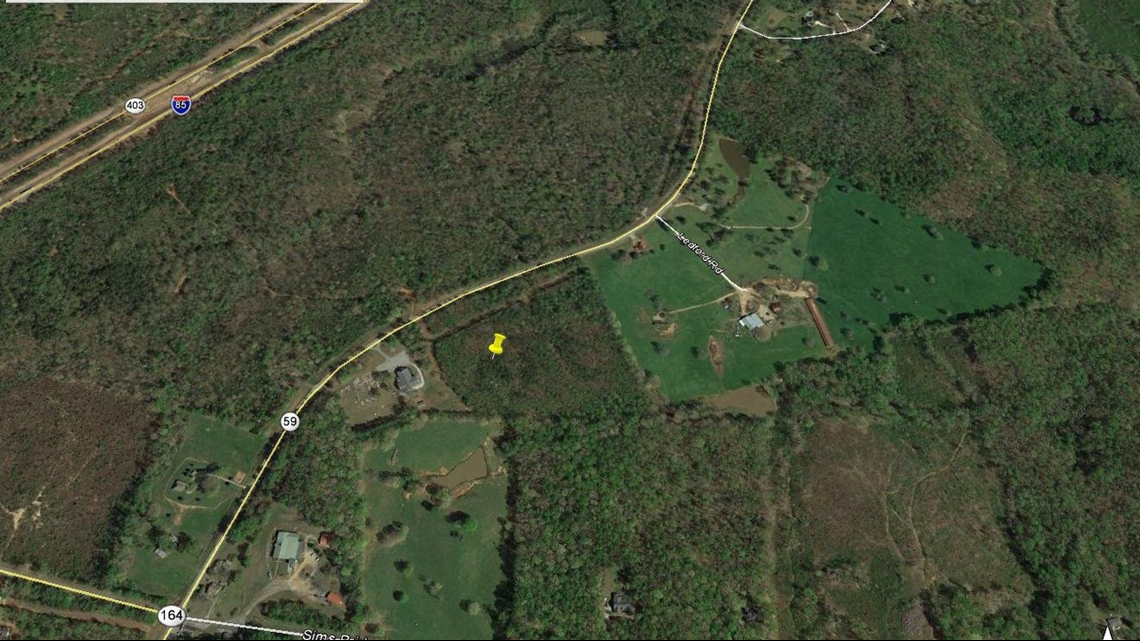
“She also had some other bones that were located approximately 70 feet down through these woods, as well as some additional remains that were located across this old road bed.”
“I can tell you that it seems to be consistent with a hand bone or a foot bone,” Howell said. “I'm not surprised by this, given how long she was out here, the leaf litter, the ground debris. We recovered the majority of her, but again, some of these smaller bones are difficult to see and difficult to find—even as we rake and sifted through all this debris.”
Howell said rodents and animals will grab the bones and haul them off and put them in their nest or underneath one of the many down trees or large, fallen branches.
“It would not surprise me if there were small bone fragments in that tree stump over there, that would have been dragged away through rodent activity—but we try our best to recover what we can through digging and sifting,” he said.
As he walks through the wooded area, he bends over, pushing leaves around with his heavy, tan work boots, searching with a meticulous eye.
“That's a twisted root. It's amazing how even little sticks now look like bone fragment,” he said.
“There's no telling what all else may be out here,” he said. “Now, I want to spend a day out here again... keep looking. We could spend forever out here and possibly not recover everything.”
While the bones were scattered, he says, there's no indication that she was dismembered.
It all began when a real estate developer, surveying the land for construction, thought he saw a soccer ball.
It was a bright white, round… skull.
The skull appeared to be undisturbed, Howell said.
“It had bleaching on one side of the skull and the side of the skull was not exposed to the sun and to the elements had some slight discoloration to it,” he said. “We're also looking for any trauma that may be to the skull, such as blunt-force trauma, a bullet hole, or anything else that seems abnormal.”
While there was no evidence to suggest blunt-force trauma, they are treating her case as a possible homicide.
“It would be irresponsible to not treat this as a foul-play homicide,” Howell said.
The investigation started when Banks County Sheriff’s Office and the GBI recovered bones and evidence on Monday, Feb. 6.
“When we're requested to do a skeletal recovery, one of the first things we want to do is survey the territory; get an idea of how massive of an hour are we dealing with. Is it a clandestine burial or is it a surface scatter? In this situation, it was a surface scatter,” Howell said.
Not a burial.
It appeared, he said, to be the result of some animal activity associated with the remains; they were dispersed throughout the area—a scene spreading roughly 70-feet long by 90-feet wide.
Oftentimes, he admitted, crime scene work can be dynamic and ever-changing, especially when dealing with environmental conditions, like scattered storms rolling through the area.
“We were doing our best to try and collect all the remains, search the area, scrape away all the pine straw and the leaves in the area, to be able to locate all the evidence that we could find before the rains moved in,” Howell recalled.
But they were also dealing with diminished daylight in the wintertime evening hours.
“The sunlight changed throughout the course of the day, so things that we were not seeing during the daylight hours, we were seeing midday and into the afternoon,” Howell said, who also said the investigators raked and sifted through small quadrants, locating bones and evidence; documenting them and photographing them, laying them out to form the shape of her body.
A look inside the evidence
Dispersed amongst the bones, investigators found two pieces of silver-colored jewelry, as well as several pieces of clothing—which they had to isolate from the trash strewn across the area.
“We have to evaluate and determine whether or not there's any sort of investigative interest associated with it,” Howell said.
Approximately 20-30 feet from the bones, they found a small, blue drawstring or shoelace, purple underwear with white lace, a blue sports bra with black trim and white or gray sweat suit-type pants and remnants of a T-shirt—all degraded due to environmental conditions.
Jewelry found in close proximity to the skull, included was a silver butterfly necklace pendant with clear jewels and a silver ring with clear gems embedded inside and around the top of the ring.
“I'm hoping that somebody will recognize one element of the clothing or one element of the jewelry and give us some direction as to who this may be,” Howell said.
He is treating her case as a homicide investigation, covering everything from sexual assault to abduction to kidnapping to human trafficking and armed robbery.
GBI anthropologist, Alice Gooding, who worked on beauty queen Tara Grinstead’s murder case and excavation, said that she could determine the female’s height, sex and ancestry based on her bones and what they tell her.
She said it’s bones that give the dead a voice.
“They don’t have a voice at this point and there’s no one speaking for them… and as a scientist, this is the best that I can offer.”
READ | Anthropology Report
Her bones, Gooding said, are quite small and gracile, which means they're very smooth, giving her a pretty good indication that she is female.
Height is determined by the length of the arm and leg bones, she said.
“She was pretty short and you can tell, the length of the bones are quite short.”
“In terms of stature, or living height, we can measure the bones themselves and put that into a program that generates a height based on the measurements of all her long bones—which are the bones of her arms and legs,” Gooding said holding up the femur bone.
Race, however, is a difficult concept, she said, especially when looking at bones.
“We use [race] in life and it connotes skin color and language, clothing, personal mannerisms, but unfortunately, our bones are only a collection of genetic-relatedness from thousands of years ago,” Gooding explained.
“So, they show us our ancestry, as opposed to race. And there's not always a tight correlation between your skin color in life and the... I guess what our bones are telling us.”
That said, the bones are likely that of a black female, but also has Hispanic and American white traits present—but nothing decisive, although some black, tightly curled hair was found amidst the bones as they were recovered.
“Unfortunately, she actually had characteristics in the face of multiple, different ancestral groups, which is going to make it more difficult for her to be identified,” she said. “We identified her as being 'probable black,' however, she neatly falls into categories of Hispanic and American white females as well.”
While her remains are a largely completed skeleton, Gooding said, she is missing some components of her left, lower arm. And her right lower arm is missing a bone, as well as missing some from her hands and feet.
“We really only have fragmentary remains of—because there's carnivore damage to the bones, which means scavenger animals chewed up the ends of the bones, and they also chewed up some of the hands and feet, so we are missing quite a bit of those—and a few of the lumbar vertebrae as well, which are the vertebrae in your lower back.”
Gooding could determine an approximate age based on visual observation and examination of her pelvic bone, as well as her teeth.
“Her teeth are also not very worn down, which means that she is not significantly older—which means that the age estimation that we did off the pelvis is corroborated by the teeth.”
She points out the quality of her teeth, indicating, she said, that she may have had braces at some point and access to healthcare.
“The bottom ones, there is kind of an interesting displacement of this tooth, and she is missing a molar that would have fallen out or been taken out long before death. However, she has an uninterrupted wisdom tooth.”
Another indication of her age, she said, is her skull.
“In females, you tend to see a smoother brow ridge, which are those bones underneath your eyebrows,” she said.
The skull also clues the forensic anthropologist that there is no evidence of “perimortem trauma,” which is trauma that happens at or around the time of death.
“In this case, no, there's nothing on the bone that indicates what happened to her,” Gooding said.
Who is Jane? A mother, a friend, a wife? Her bones give clues, but few answers.
Howell, however, is optimistic that someone out there can give her back what time has stolen… her identity.
She matched several people missing in the southeast area, he said, posing both hope and challenges.
“We're utilizing the website known as NAMUS—which is a website for missing people and her data has been entered into that website. We're reaching out to all our law enforcement partners in the surrounding states to see if she may match some of the descriptions of many of these missing people.”
After Jane’s original story published and aired on 11Alive, several new leads and glimmers of hope presented themselves to Howell—including a DeKalb County family who was praying it was their missing daughter. However, after comparing Jane’s dental records to their daughter’s, Howell was able to rule out a positive ID.
Back to square one.
“That’s one of those things where we can quickly include or exclude them. Unfortunately, she was excluded as the person who was located in Banks County. That’s one thing you don’t get a lot of training for, is how do you break bad news to the family.”
And, it keeps him up at night too, he said.
“I have an open-ended case where a resolution may be a long time coming, so how do you operate in terms of your investigation. How do you not let this bother you at night?”
The way he deals with it is to carve out and dedicate time every week to Jane’s case.
“I try to dedicate each one of my Friday’s towards this case, because I don’t just have this case. I have several others we’re working on.”
And he has vowed to keep digging until Jane has a name, a face and a culprit.
“Oh, I never give up,” Howell commanded. “I’m not a quitter.”
Their stories are endless. The silence and secrets remain. But, you may have the answer that could give their story a conclusion more fitting than how their life ended.
Do you have the clue to solve a case?
>>> If you have any information about any of these unsolved mysteries, contact your police department or call 911.
>>> If you have any information or believe that you know Jane of Jackson County, call the GBI Athens office at, (706) 552-2309 or (706) 542-7901. Or call the Jackson County Sheriff’s Office at (706) 367-6000.
>>> If you have any information or believe that you know Jane found in Commerce, call the GBI Athens office at, (706) 552-2309 or the Banks County Sheriff’s Office at (706) 677-2248.
>>> If you know what happened to Leslie Adams, or have any information about her disappearance and death, call the Gwinnett County Police Department at (770) 513-5000.
>>> If you know what happened to Elaine Nix, call the Gwinnett County Police Department at (770) 513-5000.
For more of Georgia's cold cases, visit 11Alive's Cold Case page.
HOW WE DID THE STORY |
Gone Cold is an ongoing series, where 11Alive Digital Journalist Jessica Noll investigates some of the most infamous and lesser-known cold cases in Georgia. She's digging for answers for the still-grieving families who long for them, and for the victims who have never found their justice.
Noll, along with investigative journalist Rebecca Lindstrom, spent several months interviewing law enforcement, forensic experts and family members for this in-depth, investigative story.
They traveled to The Body Farm in Knoxville, Tenn., as well as visited several of the cites along I-85 corridor, spanning multiple counties in Georgia, where remains had been found.
They investigated multiple cases and sifted through piles of documents, including police reports, restraining orders and missing persons reports in an effort to locate, detail and map all 30 victims and tell their stories in two T.V. specials and a long-form, multimedia, interactive digital story.
CONTACT THE REPORTER |
Jessica Noll is a multimedia journalist, who focuses on in-depth, investigative crime/justice reports for 11Alive's digital platforms. Follow her on Twitter @JNJournalist and like her on Facebook to keep up with her latest work. If you have a tip or story idea, email her at jnoll@11Alive.com or call, text at (404) 664-3634.
Join our "Gone Cold" Facebook group and join our discussions about cases like these, at https://www.facebook.com/groups/gonecold/ and follow us on Twitter: @11AliveGoneCold.
RELATED STORIES |


